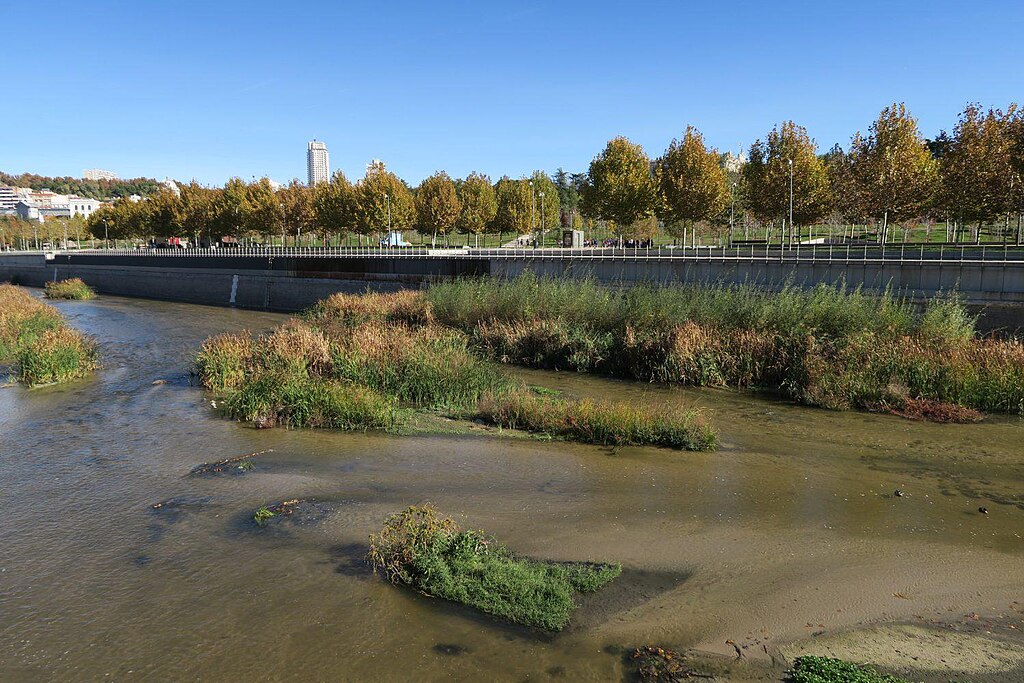In recent weeks, several cases related to light and noise pollution and their relationship with affected biodiversity have appeared in the Spanish media.
Scientists, conservation associations and citizens have reacted in favour of the defense of their ecosystems and against the consequences of these cases, putting this type of pollution at the center of the public debate.
Projects such as PLAN-B aim to provide evidence for the establishment of sustainable and effective public policies that minimize the impact of light and noise on our lives and our environment.
Four gazelles and a Barbary sheep die of “stress and agitation” after a music festival next to an animal reserve in Almeria.
Four gazelles and a pregnant female Barbary sheep have died at the Finca Experimental La Hoya de Almería, as a result of “stress and agitation” caused by the concerts of the Alamar music festival, held in a neighbouring park from 19 to 22 June.
This has been reported by the Experimental Station of Arid Zones (EEZA-CSIC), in charge of the animals, which has also specified that the deceased mammals are three mohor gazelles – including a calf a few days old and another about to give birth – as well as a pregnant female Barbary sheep and a newborn Cuvier’s gazelle.
In a statement, the research institute’s veterinarian, Sonia Domínguez, said that the necropsy data indicate that the causes of the animals’ deaths were “maternal neglect of one of the calves“, “an abortion” and “various traumatic injuries”, all “caused as a result of stress and agitation due to the concerts” of the Alamar festival, held a few metres from the reserve, according to the statement.
Numerous national and international media have echoed this event (2,3,4), the fatal consequences of which were warned by scientists from the CSIC, who asked the Almeria City Council to change the location of the concerts, based on “the health problems that they could cause to the species” found within the estate. This request was rejected in the first instance, but after learning of the consequences for the animals, they changed their minds.
Controversy over the installation of night-time lighting along a stretch of the Manzanares River in Madrid.
Madrid City Council has planned to install ornamental lighting along part of the Manzanares River. According to its promoters, this intervention will provide this section with ornamental lighting to create an atmosphere that enhances its natural landscape and walkways beyond daylight hours.

The renaturation of the Manzanares River in Madrid (during the period 2016-2019) has significantly increased the biodiversity of an urban-peri-urban river stretch of almost 14 kilometres. That is why neighbourhood associations and a large part of the scientific community have expressed their opposition to this ornamental intervention, as they fear that constant lighting – by day the sun, by night artificial light – will cause the disappearance of a large part of the biodiversity that has once again populated this stretch of the river (more than 120 species of birds and fish).
The works for the installation of this lighting infrastructure began in July 2024, and have the approval of the Tagus Hydrographic Confederation, but this approval is not environmental, but rather on what is its competence: the management and protection of the public hydraulic domain, while no favourable reports have appeared from the environmental point of view.
Conservationist associations such as SEO/Birdlife have taken a stand against the project, as well as neighbourhood associations who believe that this intervention is aimed at promoting tourism in the area and not at enhancing its natural beauty. These associations have opened a petition on Change.org, which to date has more than 51,000 supporters.
The problem of lighting and excessive noise in peri-urban environments: from safety to tourism.
These two examples are a good example of the growing interest in countries such as Spain in the effect of light and noise pollution in periurban environments, and the close relationship between night-time leisure activities and their effect on biodiversity. Issues such as night-time lighting on promenades and avenues, the celebration of musical events near protected areas or the over-lighting of renaturalised urban riverbeds are increasingly appearing in the public debate, which includes institutions, neighbourhood associations, scientific communities and naturalist organisations.

The search for consensus solutions seems complicated at this early stage, where issues as fundamental as leisure, safety at night and rest are at the centre of the debate, and sometimes at odds with each other. In addition, environmental and biodiversity protection is now being added to the debate, along with respect for the natural cycles of the ecosystems with which we coexist. The scientific community must provide evidence that contributes to the development of action plans that take into account all these factors and at the same time protect the environment that surrounds us. The activity of projects such as PLAN-B seeks to provide data that will help to implement public policies that mitigate the effects of light and noise pollution on our ecosystems, while also working on the well-being of the people who live in their vicinity.
The scientific community can raise its voice and contribute with its studies to better environmental planning, involving institutions and citizens in the process. To this end, PLAN-B will develop a framework and a supporting guidelines to assess the impact of light and noise pollution for decision-making to reduce potential environmental impacts, as well as a freely accessible database on the impact of light and noise on terrestrial biodiversity and develop new spatio-temporal models that assess the impact of noise and light on terrestrial biodiversity and ecosystem services, including at the European scale.

